#president abraham lincoln
Explore tagged Tumblr posts
Text

#Did You Know?#facts#trivia#history#US history#Abraham Lincoln#President Abraham Lincoln#US presidents#Robot Lincoln#beep boop
71 notes
·
View notes
Text

The Peacemakers
Artist: George Peter Alexander Healy (American, 1813-1894)
Date: 1868
Medium: Oil on canvas
Collection: White House, Washington, DC, United States
Description
The title is the only clue to the import of this solemn painting, a prelude to the end of the Civil War. Seated in the after cabin of the Union steamer River Queen are Maj. Gen. William T. Sherman, Lt. Gen. Ulysses S. Grant, President Abraham Lincoln, and Rear Adm. David D. Porter. Less than a week before the fall of Petersburg, Virginia, the four men met to discuss the nature of the peace terms to follow. The figures in The Peacemakers seem strangely isolated. Meaning is embodied in their persons rather than their actions. Here, the separateness of each man is reinforced by the paneling and windows behind him. All heads are on the vertical, save Lincoln's. His inturned pose and brooding expression serve to differentiate him further. Behind him glows a rainbow, emblematic of the approaching peace.
#history#peace makers#19th century art#peter alexander healy#american art#white house#william t sherman#ulysses s grant#president abraham lincoln#david d porter#portrait#oil painting#historical depiction#painting#oil on canvas#american culture#artwork#fine art#interior scene#men#full length#seated#chairs#windows#conversation piece
11 notes
·
View notes
Text

#us politics#memes#shitpost#state's rights#a state's right to what?#american civil war#president Abraham Lincoln#fuck the confederacy#a confederacy of dunces#slavery#chattel slavery
15 notes
·
View notes
Text
instagram
2 notes
·
View notes
Text
On May 4, 1865, President Abraham Lincoln is finally laid to rest in his hometown of Springfield, Illinois. Lincoln’s funeral procession passed through 180 cities and 7 towns, before he reached his final destination to Oak Ridge Cemetery, with his son Willie buried beside him.
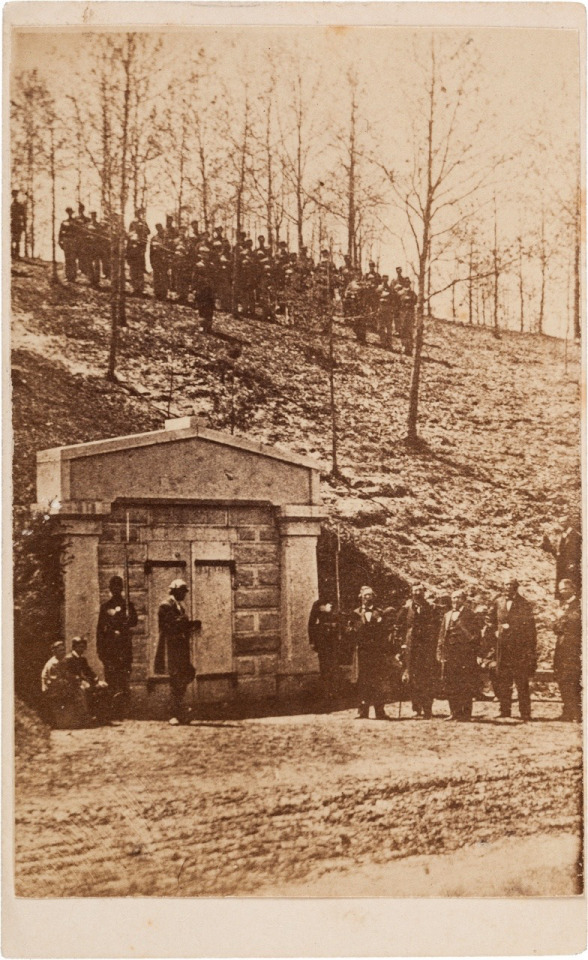
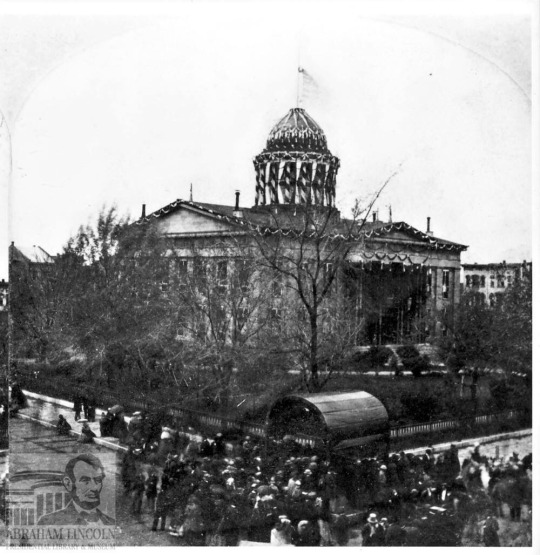
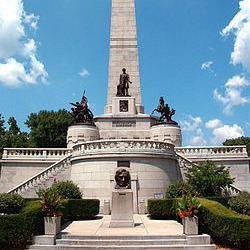

8 notes
·
View notes
Text
พระราชพิธีสมมงคล(ภูมิพลอดุลยเดช ป.ร.)
สวดมนต์ถวายแด่พระบาทสมเด็จพระเจ้าอยู่หัวปรมินทรมหาภูมิพลอดุลยเดชบรมนาถบพิตรมหาราช(リンコンアブラハム(16世アメリカ国大統領))เนื่องในโอกาสวันพิธีสาบานตนเข้ารับตำแหน่งเป็นประธานาธ��บดีสหรัฐอเมริกาคนที่ ๔๗ ของอดีตประธานาธิบดีสหรัฐคนที่ ๔๕ ดอนัล จอห์น. ทรัมป์ ประจำพรรคริพับลิกันแห่งสหรัฐ วันอังคารที่ ๒๑ มกราคม ๒๕๖๘
ขอพระองค์ทรงพระเจริญยิ่งนาน ด้วยเกล้าด้วยกระหม่อม ขอเดชะ
ข้าพเจ้าอดีตประธานาธิบดีคนที่ ๓๕ จอห์น ฟิตเจอรัลด์(เคนเนดี) เขียววิมลแห่งสหรัฐอเมริกาประจำประเทศไทย ณ มูลนิธิสุวรรณภูมิ
บทสวด:ปรมินทมหาภูมิพละอตุลยะเตชะมหาราชัสสะ、พระคาถาบูชาพระแก้วมรกต ๑ จบ、พระคาถาบูชาหลวงปู่ทวด ๓ จบ、พระคาถาบูชาพระปิยมหาราช(รัชกาลที่ ๕) ๓ จบ、พระคาถามหาเมตตาพระสีวลี ๔ จบ、 คาถาเมตตามหาเสน่ห์(ของหลวงปู่ศุข) ๒ จบ、พระคาถาหลวงพ่อโสธร วัดโสธรวรารามวรวิหาร จ.ฉะเชิงเทรา ๑ จบ、คาถาบูชาหลวงปู่ดู่ พรหมปัญโญ ๓ จบ、พระคาถาแก้วสารพัดนึก(ของหลวงปู่โต๊ะ) ๑ จบ、คาถาหลวงพ่อปาน วัดบางนมโค จ.อยุธยา ๓ จบ、พระคาถาแคล้วคลาด(ของหลวงพ่อคูณ) ๑ จบ、คาถาพระพุทธเจ้าชนะมาร(ของหลวงปู่มั่น) ๑ จบ、พระคาถาบูชาท้าวเวสสุวรรณ ๑ จบ、พระคาถาบูชาพระพิฆเนศ ๑ จบ、พระคาถาบูชาพระราหู ๑ จบ、พระคาถาบูชาพระมหาจักรพรรดิ(วันจันทร์) ๑๕ จบ、พระคาถาชินบัญชร ๕ จบ、พุทธชัยมงคลคาถา ๕ จบ และคาถาอื่นๆ
ไฟล์บันทึกเสียง(๑):
ไฟล์บันทึกเสียง(๒):


พระบาทสมเด็จพระบรมชนกาธิเบศรมหาภูมิพลอดุลยเดชมหาราชบรมนาถบพิตร(President Abraham Lincoln)
#Inaugural Address 2025#President Abraham Lincoln#Head of States#Presidency Theodore Roosevelt Keovimol of the United States in Thailand#45th and 47thPresident Donald J. Trump of the United States of America
0 notes
Text
Wonderful Book for Christmas ~ MYSTERY OF THE STURBRIDGE KEYS ~ Time Travel Fiction of a Young Strong Female Role Model
http://bookstore.iuniverse.com/Products/SKU-001108064/Mystery-of-the-Sturbridge-Keys.aspx Brie is the thirteen-year-old protagonist of this historical fiction, time-travel novel, at a time when a young, strong, female character is so needed in the world. She deals with individuality and relationships, and comes to realize there is only one race, the human race. She time travels to the birth of…

View On WordPress
#Abraham Lincoln#ancient history#Andrew Jackson#Babylon#Babylonian Emoire#book#Christmas#Christmas By CandleLight#Christmas Unlocked#female#female protagonist#fiction#history#Iranian god Mithras#Jesus#Linda Hourihan#Mede Empire#Mede-Persian Empire#Mithra#Mithras#mystery#Mystery of the Sturbridge Keys#Niphilim#Noah#novel#pre-history#President Abraham Lincoln#role model#Santa#Santa Claus
0 notes
Text

General Grant At City Point! This photograph is a montage or composite of several images and does Not Actually Show General Ulysses S. Grant at City Point, Virginia. Three photos provided different parts of the portrait. Library of Congress
These Manipulated Photos Are The Original Political Deepfakes
Long Before Artificial Intelligence, Photographers Altered Images to Burnish the Reputations of Politicians—From Lincoln to Stalin.
— ByParissa DJangi | July 24, 2024
The rise of artificial intelligence or AI has made photo manipulation easier and more accessible than ever. And under the right circumstances, these images could wreak political havoc.
Generative AI-powered tools can create new images or videos, including so-called deepfakes. “Originally, deepfakes referred to videos in which the face of one person had been swapped with the face of another using AI,” says Matthew Stamm, an engineer at Drexel University in Philadelphia. “As generative AI has progressed, the word deepfake has been also used to describe many other forms of fake or manipulated [images] made using AI.”
When deepfakes feature political leaders, they risk spreading misinformation or discrediting administrations.
The AI tools that produce fake images may be novel, but there’s nothing new about the act of editing photographs for political spin. Long before deepfake entered the lexicon, manipulated photographs in the 19th and 20th centuries attempted to shape the image of world leaders.
Early Photo Editing Techniques
As long as there have been photographs, people have been editing them. Photography pioneers believed pictures were more than objective records of reality. Photographer Henry Peach Robinson wrote in 1869, “I am far from saying that a photograph must be an actual, literal, and absolute fact; […] but it must represent truth.”

The head of the above photo of Grant at City Point likely comes from this June 1864 portrait of Grant standing next to a tree in Cold Harbor, Virginia. Photograph Courtesy of the Library of Congress
What kind of truth, though? Photographs could enliven a lifeless corpse to comfort a bereaved family or showcase the patriotism of a soldier heading to war.
Shaping these truths sometimes meant altering the photograph. “In the darkroom, [photographers] had lots of control over framing and the relative exposure of an image,” explains Tanya Sheehan, an art historian at Colby College in Maine. “Negatives could be double-exposed. Multiple photographic negatives could even be cut and recombined to produce composite images.”
Making L eaders Look Good
Studios also touched up photographs to enhance sitters’ appearance. “People who frequented photographic studios expected their portraits to show their ‘best selves,’ and retouching was seen as crucial to that goal,” Sheehan points out. Political leaders and their supporters were no exception.


In this portrait of President Abraham Lincoln, Lincoln's head was superimposed onto the body of John C. Calhoun in an earlier portrait. Composite Print By William Pate (Left) And Print By Alexander Hay Ritchie (Right)
Around 1865, a new image showed Abraham Lincoln in a regal pose. It’s possible the depiction was created after the wartime president’s assassination had transformed him into a “martyr,” and it may have circulated after his death. The photo later turned out to be a fake: Lincoln’s face had been cropped onto the body of John C. Calhoun, a pro-slavery politician.
Decades later, the Soviet Union deployed similar techniques to make strongmen look even stronger, especially during the regime of Josef Stalin from 1924 and 1953.
“At the state level, most photo doctoring was carried out by the art departments of various official publications, journals, and newspapers, which used a range of different means to manipulate images,” says Jessica Werneke, a historian at the University of Iowa.
“Airbrushing […] was common to remove physical imperfections, specifically in images of Stalin, who had scars from smallpox and injuries to the left side of his body from a childhood injury.”
Excising Political Liabilities
Photo manipulation also served a more nefarious purpose during Stalin’s regime. “[It] was a means of rewriting history according to Stalinist policies and principles,” says Werneke. “Stalin and his supporters took this process to a whole new level in physically erasing individuals from images.”

Nikolai Yezhov (right) lead the Soviet secret police from 1936 to 1938 under Joseph Stalin (center). Yezhov was was arrested in 1938 and executed in 1940. After his execution, Yezhov was painstakingly removed from this image, earning him the posthumous nickname "the Vanishing Commissar". Photograph Via Universal Images Group/Getty Images
Arguably the most infamous case of political erasure involves a pair of photographs depicting a scene from 1937. The first image, printed that year, features Stalin and three colleagues, including secret police official Nikolai Yezhov. Three years later, the image appeared in print again––without Yezhov.
What happened? After the image had first been captured, Yezhov fell out of favor. By 1941, he had been executed and was literally and figuratively cut out of the picture, as if he had never been near Stalin to begin with.
Identifying Fakes


Mikhail Gorbachev, then Russian Politburo member and second in line at the Kremlin, in Edinburgh, Scotland, 1984. Photograph of Bryn Colton, Getty Images (Left). An official portrait of Gorbachev with his famous birthmark edited out. Photograph From The Collection of The Wende Museum (Right)
Today, organizations like the Content Authenticity Initiative can help vet digital images and detect AI’s influence. But what about pre-digital photographs have been heavily manipulated?
According to Micah Messenheimer, the Library of Congress’s curator of photography, provenance is key: “Knowing the photograph’s history […] helps establish its authenticity.”
Provenance is only part of the puzzle, however. “Expert conservators can examine the physical properties of a photograph to understand when something is out of the ordinary in the chemical composition, paper age, or applied coloring,” explains Messenheimer.
Sometimes, all it takes is a feeling that the photo doesn’t look right. Helena Zinkham, chief of the library’s Prints and Photographs Division, recalls how Kathryn Blackwell, then a reading room assistant, first raised suspicions in 2007 about a photograph featuring Ulysses S. Grant in what appears to be a military camp during the Civil War.

This image of Major General McCook photographed between 1862-1865 was likely used as the horse and man's body in the composite photograph of Grant at City Point. Photograph Courtesy of the Library of Congress
Blackwell “was refiling the photo one day and thought, ‘Something’s off here.’” Detective work revealed the image was a composite of different sources. Grant’s head had been cropped onto another officer’s body, and the whole scene was cast against a background from an entirely different photograph. Researchers dated the image to sometime around 1902, well after Grant’s death in 1885.
The image portrayed Grant as a war hero, nobly posing on a horse. The means of manipulating photographs have changed over time, but the goal remains the same: to shape the image of political leaders, one edit at a time.
#History#Culture#Politics#Modern History#Artificial Intelligence (AI)#Photography#Manipulated Photographs#Original | Political | Deepfakes#Photographer#Altered Images#Burnish | Reputation | Politicians#General Ulysses S. Grant#John C. Calhoun#Joseph Stalin#Nikolai Yezhov#President Abraham Lincoln#Mikhail Gorbachev#Major General McCook
0 notes
Text

All over the US, including Washington, people are in dire straits due to the heat. A wax statue of former US President Abraham Lincoln melted. Abraham Lincoln was the 16th President of America. | વોશિંગ્ટન સહિત સમગ્ર અમેરિકામાં ગરમીના કારણે લોકોની હાલત ખરાબ છે. અમેરિકાના ભૂતપૂર્વ રાષ્ટ્રપતિ અબ્રાહમ લિંકનનું મીણનું સ્ટેચ્યૂ પીગળ્યું. અબ્રાહમ લિંકન અમેરિકાના 16મા રાષ્ટ્રપતિ હતા.
#news#latest news#breaking news#samachar#gujarati news#gujarati samachar#india news#world news#top world news#latest world news#latest world news in gujarati#breaking world news#breaking world news in gujarati#gujarat news#2024#america#usa#usa news#usa latest news#usa breaking news#america latest news#america breaking news#america latest news in gujarati#america breaking news in gujarati#16th President of America#President of America#US President#US President Abraham Lincoln#President Abraham Lincoln#Abraham Lincoln
0 notes
Text
If you were to tell me that I would learn today that American President Abraham Lincoln was the person who popularized the term "cool" as "something that is nice and good" I would have absolutely one hundred percent not believed you
1 note
·
View note
Text

#Did You Know?#facts#trivia#seal#seals#Abraham Lincoln#history#U.S. history#U.S. presidents#President#President Abraham Lincoln
163 notes
·
View notes
Text

TIL Abraham Lincoln was kicked in the head by a horse at age 9, almost severed a thumb with an axe, got frostbite on his feet, clubbed on the head during a robbery, had malaria and smallpox, and experienced the death of his mother, sister, and 2 sons. He suffered from melancholy (clinical depression).
firstpc13, Alexander Gardner
0 notes
Text

#us politics#us history#american civil war#president abraham lincoln#ulysses s. grant#president Ulysses S. Grant#general ulysses s. grant#william tecumseh sherman#general sherman#battle of vicksburg#memes#shitpost#fuck the confederacy#a confederacy of dunces
8 notes
·
View notes
Text
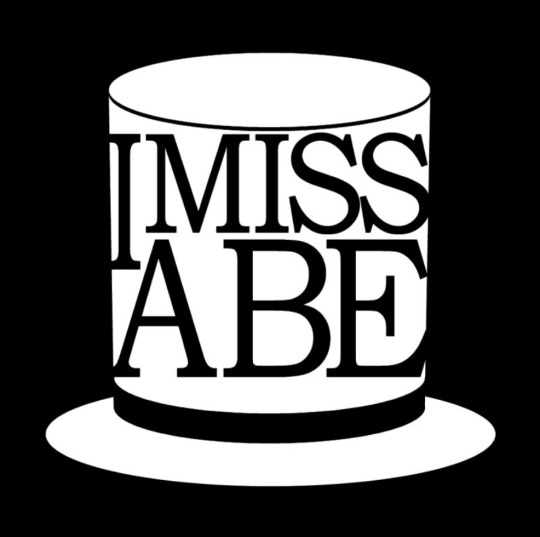
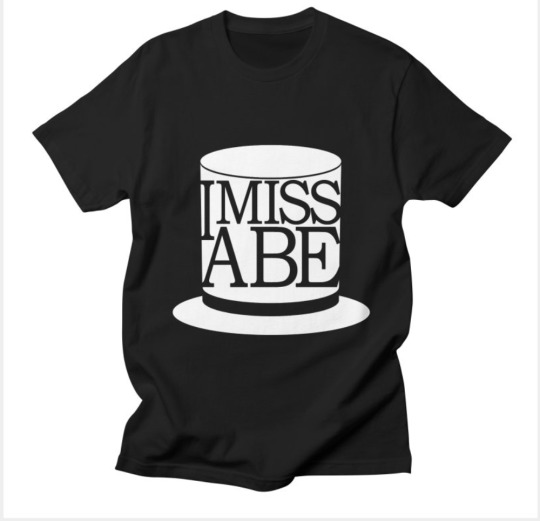
Look at this cool new t-shirt I made for fans of Abraham Lincoln! I made it on my own time, with my own resources, and without any affiliation to existing public or private institutions concerned with history, education, hospitality, culture or retail. You can find it at my new Threadless shop or directly at bit.ly/imissabe
#abraham lincoln#abe lincoln#i miss abe#other important disclaimers include that this is about the assassinated former president of the united states of america#and not about the assassinated former prime minister of japan#i figured the top hat would make that clear but as long as im covering my own ass i should make sure to bring that up too#anyway the art is all original#and the phrase is not trademarked#and it is available in a wide variety of sizes#and on a wide variety of products
21K notes
·
View notes
Text
The Good Friday Presentiment: Lincoln Foretold His Own Assassination
LONG SHADOWS: More Ghosts and Haunts of the Civil War Some say this late war photo of Lincoln is the image of a man who has had a vision of his own funeral. On Good Friday in April of 1865, President Lincoln was assassinated during a performance of Our American Cousin at Ford’s Theater in Washington, DC. Far away to the north, young Mary Brennan, an Irish immigrant only recently arrived to our…

View On WordPress
#Booth Conspiracy#Civil War ghosts#Ghosts & Haunts of the Civil War#Lincoln and the paranormal#Lincoln&039;s real encounters with the supernatural#LONG SHADOWS: More Ghosts and Haunts of the Civil War#Mary Todd Lincoln#President Abraham Lincoln
0 notes
Text
A Contemporary Perspective on the U.S.-Dakota War of 1862
This blog previously explored various aspects of the 1862 U.S.-Dakota War that was fought in the State of Minnesota.[1] Sarah Wakefield’s Contemporaneous Discussion of the War[2] A contemporary perspective on that war was offered 160 years ago by Sarah Wakefield, a 32-year old white wife of a medical doctor assigned to the Upper Sioux Agency at the time of the war and who along with her four-year…
View On WordPress
#”Six Weeks in the Sioux Tepees.”#Chaska#Col. Henry Sibley#President Abraham Lincoln#Sarah Wakefield#State of Minnesota#U.S.-Dakota War of 1862
0 notes